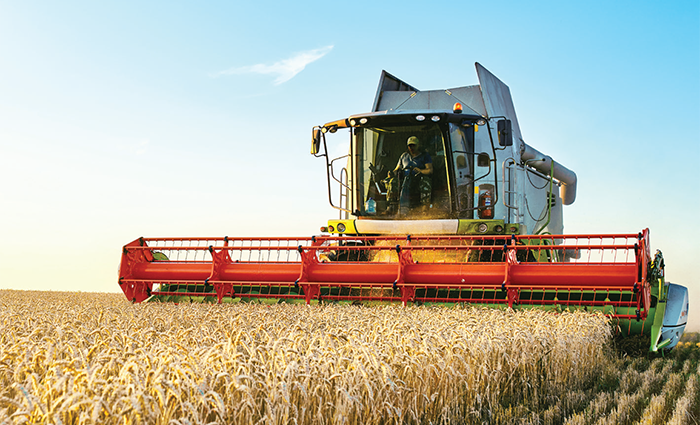The need to prioritize food safety and effective decontamination practices throughout the food life cycle. By Larry Clarke
Waste not, want not. That axiom couldn’t be farther from the truth when it comes to our love affair with food. Did you realize that 40 percent of all food is thrown away in the USA? Did you know that more than one-tenth of American households were deemed ‘food insecure’ before the pandemic even hit? What are the causes behind this problem, and what are the solutions?
Educating the masses is one important place to start. Consider the widespread disposal and disregard of ‘ugly’ food by the buying public. Teaching consumers about imperfect food shapes and expiration dates is a major step toward the reduction of food waste.
Imperfect foods have become a focus of innovative startups by bringing them to market with campaigns that support consumption. And expiration dates can also be extended in the FFV (fresh fruit and vegetable) markets by decontamination processes. The processes themselves are under question due to the residuals left on the FFV during the process, but the standardization of FFV has improved with better seed technology, therefore improving the processing capabilities and efficacies.
Beyond that, a continued improvement in supply chain management and cold storage traceability and tracking is crucial for saving perfectly good food from ending up in landfills. The tighter the supply chain and the better the tracking capability, the higher the likelihood that fresh produce will make it to the grocery store with the consistency and confidence that consumers are requiring. The same goes for food processors, who see consistency and product quality as part of their requirements for suppliers.
So fresh and so clean
Prioritizing food safety and effective decontamination practices early in the food life cycle can be incredibly impactful in limiting food waste. The farmer community carries the burden of having to harvest when the produce is ready and when the weather is willing. This does not always match with the requirements of food processors or distributors. Any misalignments create waste. This is the area of focus for the vertical farming industry, which can match the readiness of the crop and harvest much more closely to the consumer demand.
Early decontamination creates a positive virtue cycle. Clean products create less contamination in the processing and handling equipment across the supply chain. Also, cleaner products are less likely to have detrimental microbial impact in the given time to market from harvest to consumer. The longer that molds, fungi, and pathogens remain on the product, the greater the foothold they take and the larger the negative impact they have on the product’s value (in both appearance and nutrition).
To be sure, the impact of clean (or decontaminated) processing and handling facilities cannot be overstated. Not to place it on an equivalency, but it is the same reason that hospitals must work tirelessly to combat bacteria. If a negative microbial contamination is found, it will likely be spread by the general nature of the handling and, like the produce being shipped, the microbial will be spread with each load that moves around the country.
Providing an oasis
In wealthy countries — and, more specifically, wealthy ZIP codes — food insecurity is not much of an issue. We can afford the higher-margin items, which promotes a higher likelihood that markets can have higher returns on investment. These higher margins tend to offset the losses of products (food waste) that are simply seen as a cost of doing business. If we can systematically reduce the losses that occur in the supply chain to the market, we can also look for ways to reduce the losses that occur at the market and once the product has been taken home for consumption.
The general rule of thumb is that about one-third of food is destined to be ‘wasted.’ Much of this waste occurs once products are harvested and introduced to the world of bumps, bruising, and contamination in the normal handling to get the product to market. Over time, this natural decline in wholesomeness is inevitable, but a sustained focus can delay the process; that is what ‘shelf-life extension’ is all about.
If we can add further steps to the tracking and tracing of food that has become so valuable in the improvement of food waste reduction, we can make strides. The focus should now be about a curative impact on the problem, not just identifying the contaminated product. We have seen new technologies coming forth working on the dehydrating reality of post-harvest FFV, but not as much on the reduction of molds, fungi, and pathogens. Done at an early stage in the supply chain, and maybe yet again as it gets closer to the consumer, decontamination of food has been shown to reduce waste and improve the safety aspects of the product.
As we see food deserts continue to be an issue in low-income neighborhoods (as well as low-income countries), any improvement in the shelf life — and therefore improvement in supply chain margins — will help provide more food for those going without. It only stands to reason that less waste equals more food for consumption. Waste not, want not.
For a list of the sources used in this article, please contact the editor
Nanoguard Technologies
Larry Clarke is the CEO of NanoGuard Technologies, a company that prevents food and feed waste and improves food safety by eradicating harmful pathogens and mycotoxins through its Airilization technology. He brings more than 30 years of experience in agribusiness, including global business management, trading, and international assignments. Larry graduated with an agriculture degree and a business degree from Mississippi State University, as well as the Advanced Management Program at Harvard Business School
